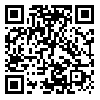BibTeX | RIS | EndNote | Medlars | ProCite | Reference Manager | RefWorks
Send citation to:
URL: http://vacres.pasteur.ac.ir/article-1-47-en.html
Introduction: Vaccination has been the most effective human intervention in alleviating human sufferings and death. Vaccine production in Iran has a long history however, in the face of a changing global landscape, it requires a new roadmap for research, development and production in the coming decades. Methods: This document was drafted based on Article A of the “Comprehensive National Scientific Roadmap”, in compliance with priorities laid out in the primary directives as well as the key concerns of the stakeholders outlined in the 20-year vision for the country, the fifth development plan, the Comprehensive National Scientific Roadmap and the Scientific map of Health System. In addition, policies of various developed and developing countries, related WHO publications and published literature on policymaking were reviewed to obtain data pertaining to topics such as the current vaccine landscape, historical and current trends, the challenges and obstacles in vaccine research, development and production as aids to decision making. Results: In the course of several sessions, the selected panel outlined the vision, mission, expected outcome, main objectives and the founding principles of the national policy document for science, technology and innovation in vaccine production in Iran. In addition, guidelines in areas of policymaking, management and laws, financial resource allocation, knowledge production, publication and knowledge sharing, human resources, expansion in product manufacturing and services, entrepreneurship and communication were outlined. Conclusion: Vaccine production in Iran is facing many challenges and to become a successful player in the global vaccine market, it requires implementation of the guidelines that have been outlined in this draft. Remaining a supplier of traditional vaccine to the domestic market, in the face of increasing competition from the emerging manufacturers, is not a viable option for this industry.
Received: 2015/08/1
| Rights and permissions | |
 |
This work is licensed under a Creative Commons Attribution-NonCommercial 4.0 International License. |

This work is licensed under a Creative Commons Attribution-NonCommercial-NoDerivatives 4.0 International License.





